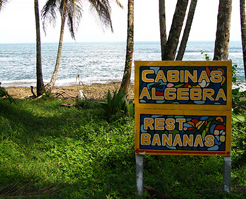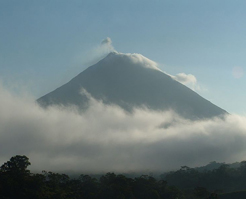
Welcome to Costa Rica / Bienvenido a Costa Rica


Telephone:
E:
 Costa Rica lies in the Central American isthmus, bordering Panama to the south and Nicaragua to the north. The 51,000 square kilometres of land offers 5% of the world’s biodiversity with the country acting on this with the aim of becoming the world’s first carbon-neutral country by 2021.
Costa Rica lies in the Central American isthmus, bordering Panama to the south and Nicaragua to the north. The 51,000 square kilometres of land offers 5% of the world’s biodiversity with the country acting on this with the aim of becoming the world’s first carbon-neutral country by 2021.
The level of literacy is around 95%, one of the highest in Latin America, with a focus on education throughout the country. The army was constitutionally abolished in 1949, with much of the additional money invested into the education system as well as security and culture.
Over 25% of the country’s landmass is protected, while it offers the greatest density of species in the world. Conservation and sustainability are vital within the country in order to preserve the diverse and impressive ecosystems. It is arguably the birthplace of ecotourism with numerous activities that make use of the natural surroundings with an abundance of volcanoes, rivers and waterfalls. The country is famous for birdwatchers with 870 species, while Tortuguero on the Caribbean coast offers beautiful beaches for turtle nesting.
International flights arrive into the capital city, San José in the Central Valley. The surrounding province of the same name is the most highly populated in the country and crosses the impressive mountains of the Central Mountain Range, including national parks, forest reserves, fertile lands and coffee plantations. The capital city offers the National Theatre, home to some of the best national and international artists, as well as world class museums, parks, hotels and historic buildings.
To the North of the Central Valley sits the Poás volcano, offering a beautiful landscape with a blue sulphur pool in its crater. Further north is the country’s most active volcano, Arenal. The perfectly conical shape offers great views from the surrounding hotels within the Arenal Volcano National Park that also features the Arenal Lake Reservoir, the country’s largest lake and a source for hydroelectric power. A popular attraction is the Arenal Hanging Bridges, offering a 3km route to experience the rainforest on a series of paths and suspended bridges. Stunning views can be found from the bridges at the height of the canopy, while the pathways allow you to get up close to the flora and fauna of the rainforest.
Along the east of Costa Rica lies the multicultural province of Limón which features 200 kilometres of pristine coastline along the Caribbean Sea. Tortuguero National Park forms the northern part of the province, famous for its turtle nesting. Tortuguero beach is the most important location for green turtle nesting in the Western Hemisphere and offers a 22 mile protected refuge that also allows giant leatherback, hawksbill and loggerhead turtle nesting. Green turtle nesting occurs from July to October, which guests can observe to strict guidelines. The city of Limón itself is an essential port to Costa Rica’s economy, while much of the Caribbean waters are excellent locations for snorkelling.
The Port of Caldera lies in the province of Puntarenas in the southern Pacific part of the country. Cruise ships with destination of the Panama Canal bring hundreds of tourists daily. The province known as the ‘Pearl of the Pacific’ also features Manuel Antonio, regarded as one of the most beautiful National Parks in the world. The white sand beaches and blue waters sit in front of the rainforest where you will find hundreds of bird and mammal species including all four species of monkey. Accommodation options are plentiful and offer excellent views of the beaches. Watersports are popular in the area and there is a buzzing nightlife. Corcovado National Park also lies within the province, offering more endemic species as the gold frog while American crocodiles guard the Tárcoles River. The uninhabited Cocos Island is a prime spot for scuba divers for its population of hammerhead sharks, rays, dolphins and other large marine species.
